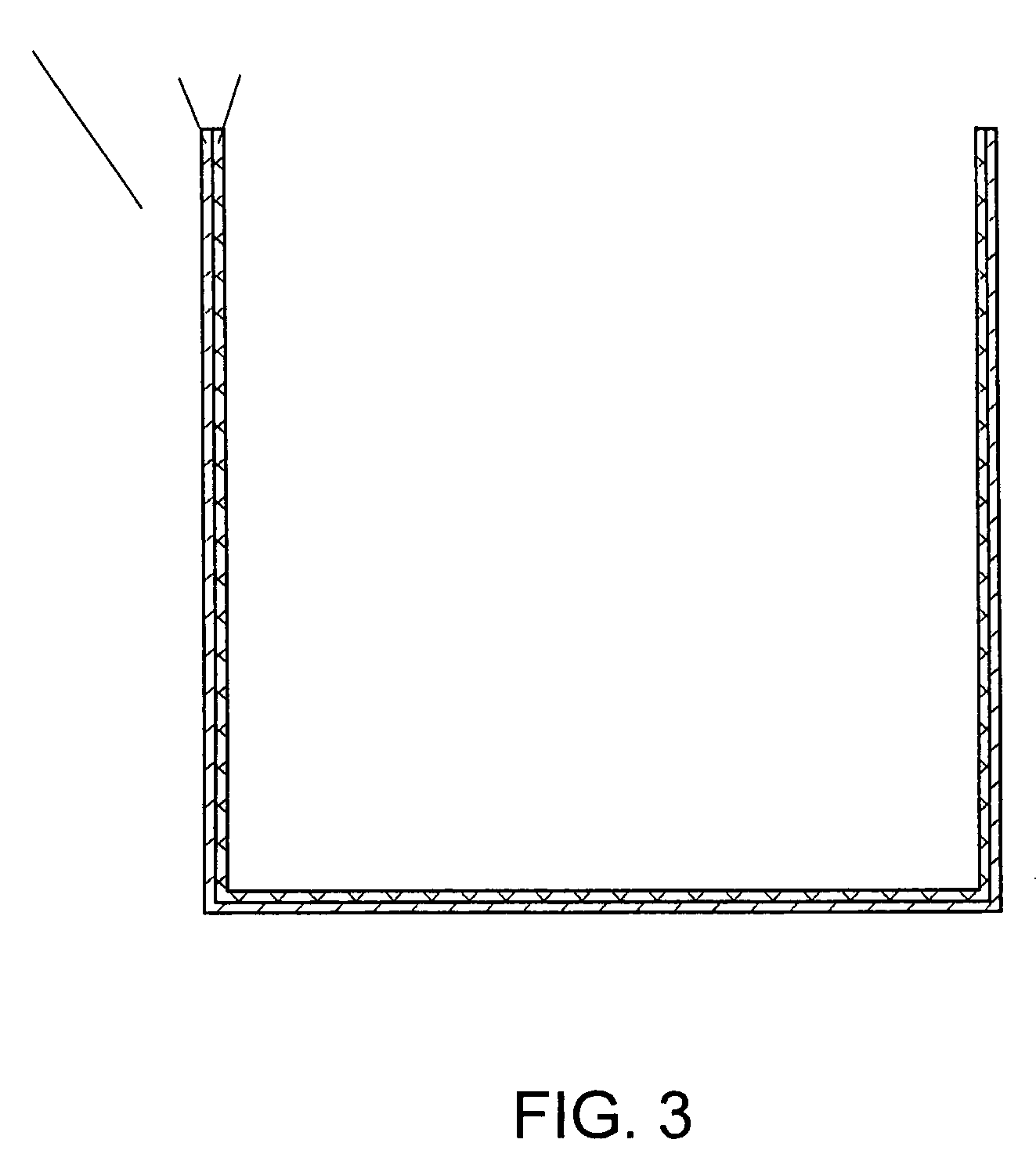Process for the production of thin layers of silicone, thin silicone and use
- Summary
- Abstract
- Description
- Claims
- Application Information
AI Technical Summary
Benefits of technology
Problems solved by technology
Method used
Image
Examples
Embodiment Construction
[0045] In a first example, a three-layer coextrudate 1 is extruded from a die. This coextrudate 1 consists of a substrate layer 2 made from a thermoplastic material, next to which is a silicone layer 3 made from a thermoplastic silicone elastomer. The silicone elastomer is followed by a top layer 4 that is also made from a thermoplastic material.
[0046] The thermoplastic material can be polyethylene, e.g. LDPE or LLDPE, polypropylene etc. or a blend of different materials. After it has been extruded, the coextrudate can be oriented longitudinally and / or transversely, as a result of which the strength properties of the individual layers are improved and the thickness of the layers is reduced. The substrate layer 2 and the top layer 4 can each be between 10 and 500 μm thick in the extrusion process. The silicone layer 3 can be between 5 and 30 μm thick.
[0047] These thicknesses are reduced significantly by the orientation operation, so that at the moment silicone layers 3 with a thick...
PUM
| Property | Measurement | Unit |
|---|---|---|
| Fraction | aaaaa | aaaaa |
| Percent by mass | aaaaa | aaaaa |
| Thickness | aaaaa | aaaaa |
Abstract
Description
Claims
Application Information
 Login to View More
Login to View More - R&D
- Intellectual Property
- Life Sciences
- Materials
- Tech Scout
- Unparalleled Data Quality
- Higher Quality Content
- 60% Fewer Hallucinations
Browse by: Latest US Patents, China's latest patents, Technical Efficacy Thesaurus, Application Domain, Technology Topic, Popular Technical Reports.
© 2025 PatSnap. All rights reserved.Legal|Privacy policy|Modern Slavery Act Transparency Statement|Sitemap|About US| Contact US: help@patsnap.com


